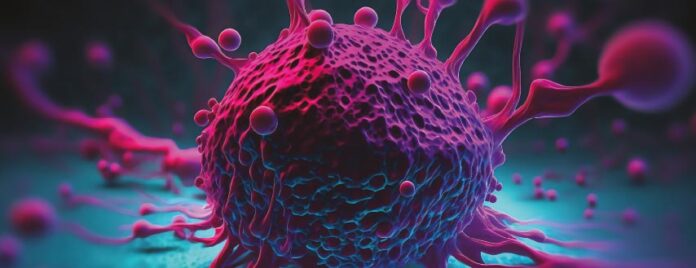
Researchers at Memorial Sloan Kettering Cancer Center (MSK) and Weill Cornell Medicine discovered a new relationship between cancer cells and the immune system, and shows how cancer can hijack the immune pathway called the STING pathway.
A new tool, ContactTracing, enabled the researchers to show that chronic activation of the STING pathway, induced by chromosomal instability (CIN), promotes downstream changes in cellular signaling. This rewiring of downstream signaling stifles productive, anti-tumor immunity, results in “a pro-metastatic tumor microenvironment” by attracting cells that suppress the immune response to the area in and around the tumor, and helps cancer metastasize.
The findings help explain why STING agonist drugs have been unsuccessful in clinical trials in patients with advanced cancer, and suggest that many patients may actually benefit from STING inhibitors. In addition, the findings point to a biomarker-based approach that could help identify which patients might benefit from STING activation and which from STING inhibition.
This research is published in Nature.
“There’s been millions of dollars invested in drugs that activate the STING pathway to fight cancer, and so far in clinical trials, they have not shown significant anticancer efficacy,” said Samuel Bakhoum, MD, PhD, an assistant member in the human oncology and pathogenesis program and an assistant attending, department of radiation oncology at Memorial Sloan Kettering Cancer Center (MSK). “In the lab, these drugs held a lot of promise—but in one trial of 47 patients, there were only two whose cancers even showed a partial response. In another trial of more than 100 patients that combined STING agonists with another immunotherapy, the overall response rate was 10%. So the question driving this research was, ‘Why don’t they work despite such promise in the preclinical setting?’”
“[Chromosomal instability] is a feature of cancer, especially advanced cancers, where the normal process of cell division goes haywire,” said Bakhoum. “We knew that chromosomal instability is an important driver of cancer’s ability to spread, otherwise known as metastasis,” Bakhoum continued. “What we found was that the effect was largely dependent on the immune system,” he said. “Basically, there is sinister cooperation between cancer cells with chromosomal instability and immune cells—and that cooperation is driven by STING.”
ContactTracing predicts cell-to-cell interactions and examines how cells respond to stimuli in growing tumors from single-cell transcriptomic data. “This isn’t just another tool to document whether cell type A might interact with cell type B,” said Ashley Laughney, PhD, an assistant professor of physiology and biophysics and member of the Institute for Computational Biomedicine at Weill Cornell Medicine. “We’re looking at whether and how these interactions actually affect the cell receiving the signal.”
The scientists used single-cell sequencing to understand the different cellular players in the tumor microenvironment. “One of our most important findings was that altering the level of chromosomal instability or the activation of STING dramatically changes responses in the environment in and around the tumor,” Laughney said.
They write that the re-wiring is “manifested by type I interferon tachyphylaxis selectively downstream of STING and a corresponding increase in cancer cell-derived endoplasmic reticulum (ER) stress response. Reversal of CIN, depletion of cancer cell STING, or inhibition of ER stress response signaling abrogates CIN-dependent effects on the tumor microenvironment and suppresses metastasis in immune competent, but not severely immune compromised, settings.”
The findings from the study suggest an opportunity to improve treatments for the many patients with advanced cancer driven by chromosomal instability, Bakhoum said.
“It appears the reason activating STING in these patients isn’t very effective is that most patients’ cells are already desensitized to it due to the persistent activation of the pathway from chromosomal instability,” he said. “Counterintuitively, these patients may actually benefit from STING inhibition.”













